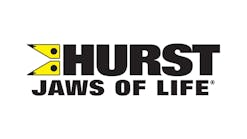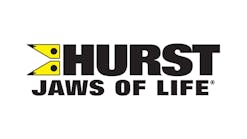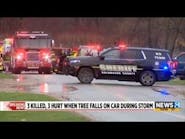University of Extrication Trainer’s Guide: Vehicle Telematics Systems
SUBJECT: Vehicle Telematics Systems
TOPIC: Introduction to OnStar
OBJECTIVE: Responders will become familiar with how the OnStar vehicle communications system is designed and functions
TASK: Each member of the rescue team will be able to explain the sequence of events that take place when an OnStar-equipped vehicle or the occupant of that vehicle places an emergency call through the OnStar system
Imagine that you have 6 million citizens within your agency’s service area. Imagine that your response district covers the United States and Canada. Imagine that your communications center has some 2,500 employees and that on any given day, they receive more than 150,000 calls in a 24-hour period; nearly 400 of them emergency calls.
Imagine that your dispatchers automatically know the moment every citizen is involved in a serious vehicle collision, they have satellite technology to automatically pinpoint the exact location of the crash and your communications personnel can automatically talk to the occupants of the crash-damaged vehicle immediately following the collision.
What you just imagined isn’t fictional; it exists today. We know it as OnStar, the vehicle telematics and communications system owned by General Motors. The facts are real. OnStar is a major player in the realm of public safety communications and is possibly a misunderstood resource that is under-appreciated by many public safety responders.
OnStar is a subscriber-based communications service. Customers pay a monthly or annual fee to use the OnStar equipment that is in their vehicle. Most General Motors vehicles since model-year 2008 come equipped with an OnStar factory-installed mirror, roof-mounted antennae and imbedded electronics. As of July 2011, a special OnStar system called OnStar FMV (For My Vehicle) can now be purchased and installed in hundreds of other makes and models of non-GM vehicles. The basic OnStar electronics of the FMV aftermarket unit are self-contained within a replacement inside the rearview mirror.
With a basic OnStar subscription, users of the factory-installed system or the FMV mirror are able to manually summon an OnStar Emergency communications specialist, called an OnStar Advisor, with the touch of their mirror-mounted red button. When this happens, the OnStar system uses an imbedded wireless unit to make the call, which will be routed to one of three OnStar call centers that handle emergencies: Charlotte, NC; Warren, MI; or Oshawa, Ontario, Canada. “Red Button” presses, as they are referred to by OnStar, are generally for manually reporting emergencies such as medical illnesses within the vehicle, Good Samaritan calls from the OnStar subscriber, or reporting minor collisions when no automatic crash signal has been generated.
The second type of emergency call that the OnStar Advisors receive are called “automatic crash response” calls. This is a call automatically placed to an OnStar Emergency Advisor when vehicle on-board sensors detect a moderate to severe crash, regardless of airbag deployment. Most GM-installed OnStar systems use sensors throughout the vehicle to alert the OnStar Advisor that not only has a crash occurred, but in which direction the impact occurred, if there was a secondary collision, whether airbags have deployed and the change in velocity over time (a measure of the severity of the crash).
The factory-installed OnStar system receives data from the airbag control module and uses this to process the dynamics of the collision that are transmitted to the OnStar Advisor. The aftermarket FMV mirror unit features an internal accelerometer that reports that the collision has occurred but does not provide the other detailed crash dynamics data.
This University of Extrication multi-part series will explain how OnStar functions and how the technology of vehicle telematics can be used more effectively by responders. Of interest to emergency management agencies and our public safety communications centers, known officially as Public Safety Answering Points (PSAPs), later in this series we’ll take a look at OnStar’s role in disaster operations and how it can support responders during natural or manmade disasters.
Next: Part 1 – OnStar Advisors
OnStar Information
Emergency Hotline for Responder and/or Communication Center personnel
866-866-5006
OnStar familiarization training available at:
https://www.onstar.com/web/portal/publicsafety
Ron Moore, a Firehouse® contributing editor, retired as training chief for the McKinney, TX, Fire Department. He also authors a monthly online article in the Firehouse.com “MembersZone” and serves as the Forum Moderator for the extrication section of the Firehouse.com website. Moore can be contacted directly at [email protected].






